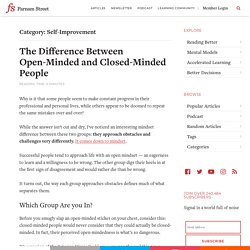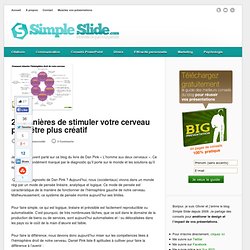

3 ABC Exercises for Newsletter Subscribers. Thanks for subscribing to the Pink Newsletter. As promised, here are three exercises — one each for the qualities of Attunement, Buoyancy, and Clarity — from To Sell is Human that I thought you’d enjoy and find useful. Jeff Bezos, the founder of Amazon.com, has accomplished a great deal in his 48 years. He’s reshaped the retail business. He’s become one of the 30 wealthiest people on the planet. And, with far less fanfare, he’s come up with one of the best attunement practices I’ve encountered. Amazon, like most organizations, has lots of meetings. The empty chair has become legendary in Amazon’s Seattle headquarters.
Try this in your own world. Attuning yourself to others – exiting your own perspective and entering theirs – is essential to moving others. L'homme aux deux cerveaux - Dan Pink. Pinkcast 2.3: The power of an "emotional first aid kit" Self-Improvement Archives. Do you know anyone that’s really, really competent?

Like really, ridiculously competent? They seem to have a work ethic that’s twice as powerful as yours, they get things done as asked, going “above and beyond” the call of duty almost always, and always within a reasonable time. They come up with creative solutions, or absent that, simply know how to get to a solution to keep the process moving. They keep going when others stop. They’re Competent, with a capital “C”. Now ask yourself, regardless of the other traits you like or dislike about them, is that person at risk of losing their job, whatever it may be? I’m going to guess the latter. There’s something about the pure and simple “getting things done”-type ability, the pure hustle, which acts like oxygen for most organizations and teams, making the people with that ability super-useful. Various locations and roadways in New York State bear Moses’s name.
That is “capital-C Competence”. Pure and simple, the guy was insanely competent. The Difference Between Amateurs and Professionals. Why is it that some people seem to be hugely successful and do so much, while the vast majority of us struggle to tread water? The answer is complicated and likely multifaceted. One aspect is mindset—specifically, the difference between amateurs and professionals. Most of us are just amateurs. What’s the difference? Actually, there are many differences: Amateurs stop when they achieve something. There are a host of other differences, but they can effectively be boiled down to two things: fear and reality. Amateurs believe that the world should work the way they want it to.
Luck aside, which approach do you think is going to yield better results? In what circumstances do you find yourself behaving like an amateur instead of as a professional? Footnotes Ideas in this article from Ryan Holiday, Ramit Sethi, Seth Godin and others.
The Pixar Touch - history of Pixar - Blog - Pixar story rules (one version) Pixar story artist Emma Coats has tweeted a series of “story basics” over the past month and a half — guidelines that she learned from her more senior colleagues on how to create appealing stories: #1: You admire a character for trying more than for their successes. #2: You gotta keep in mind what’s interesting to you as an audience, not what’s fun to do as a writer.

They can be v. different. #3: Trying for theme is important, but you won’t see what the story is actually about til you’re at the end of it. Now rewrite. #4: Once upon a time there was ___ . #5: Simplify. . #6: What is your character good at, comfortable with? #7: Come up with your ending before you figure out your middle. Pinkcast 2.23: This is how to pitch your idea like a Pixar producer. 22 manières de stimuler votre cerveau pour être plus créatif. Je vous ai souvent parlé sur ce blog du livre de Dan Pink « L’homme aux deux cerveaux ».

Ce livre m’a profondément marqué par le diagnostic qu’il porte sur le monde et les solutions qu’il apporte. Quel est le diagnostic de Dan Pink ? Aujourd’hui, nous (occidentaux) vivons dans un monde régi par un mode de pensée linéaire, analytique et logique. Ce mode de pensée est caractéristique de la manière de fonctionner de l’hémisphère gauche de notre cerveau. Pour faire simple, ce qui est logique, linéaire et prévisible est facilement reproductible ou automatisable. Pour faire la différence, nous devons donc aujourd’hui miser sur les compétences liées à l’hémisphère droit de notre cerveau. Design : Créez des produits et services qui soient non seulement fonctionnels mais aussi beaux, surprenants ou touchants.
Vous trouverez ci-dessous un visuel qui liste des pistes proposées par Dan Pink pour améliorer les capacités de notre hémisphère droit. . - Visiter un musée du design.